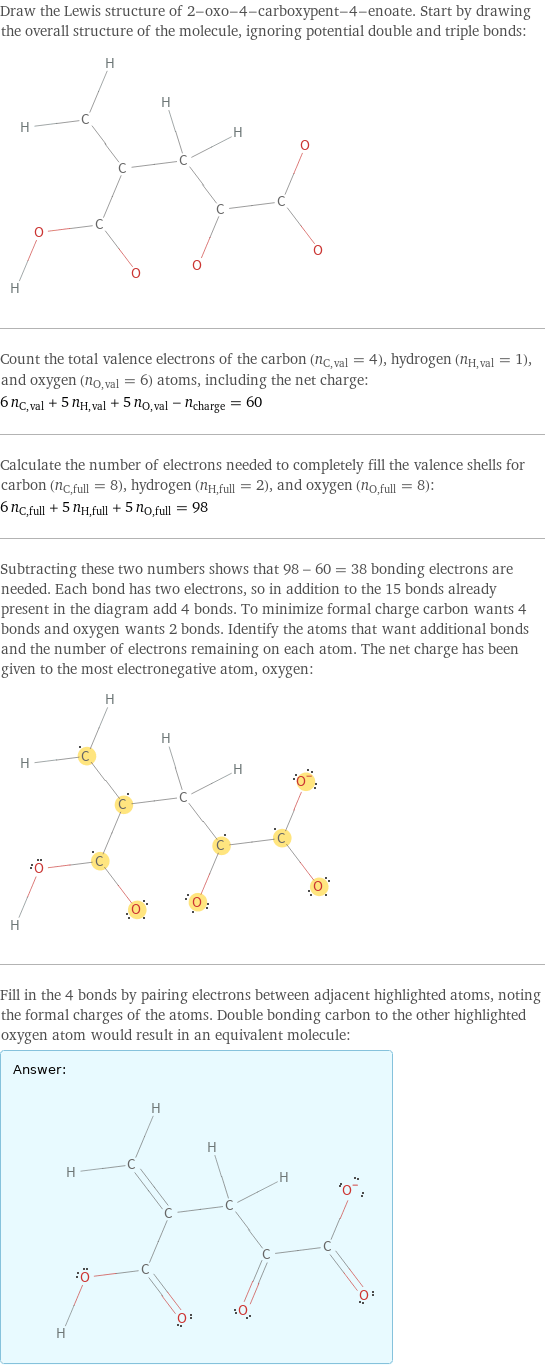Input interpretation

2-oxo-4-carboxypent-4-enoate
Chemical names and formulas

formula | C_6H_6O_5 name | 2-oxo-4-carboxypent-4-enoate mass fractions | C (carbon) 45.9% | H (hydrogen) 3.21% | O (oxygen) 50.9%
Lewis structure

Draw the Lewis structure of 2-oxo-4-carboxypent-4-enoate. Start by drawing the overall structure of the molecule, ignoring potential double and triple bonds: Count the total valence electrons of the carbon (n_C, val = 4), hydrogen (n_H, val = 1), and oxygen (n_O, val = 6) atoms, including the net charge: 6 n_C, val + 5 n_H, val + 5 n_O, val - n_charge = 60 Calculate the number of electrons needed to completely fill the valence shells for carbon (n_C, full = 8), hydrogen (n_H, full = 2), and oxygen (n_O, full = 8): 6 n_C, full + 5 n_H, full + 5 n_O, full = 98 Subtracting these two numbers shows that 98 - 60 = 38 bonding electrons are needed. Each bond has two electrons, so in addition to the 15 bonds already present in the diagram add 4 bonds. To minimize formal charge carbon wants 4 bonds and oxygen wants 2 bonds. Identify the atoms that want additional bonds and the number of electrons remaining on each atom. The net charge has been given to the most electronegative atom, oxygen: Fill in the 4 bonds by pairing electrons between adjacent highlighted atoms, noting the formal charges of the atoms. Double bonding carbon to the other highlighted oxygen atom would result in an equivalent molecule: Answer: | |
Basic properties

molar mass | 157.1 g/mol
Units

Chemical identifiers
![SMILES identifier | C=C(CC(=O)C(=O)[O-])C(=O)O](../image_source/3b0ae8cd13067db44185f7661f4b35af.png)
SMILES identifier | C=C(CC(=O)C(=O)[O-])C(=O)O